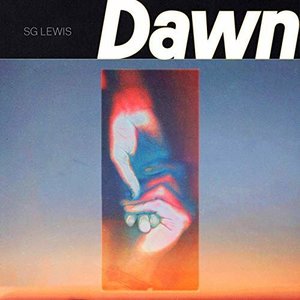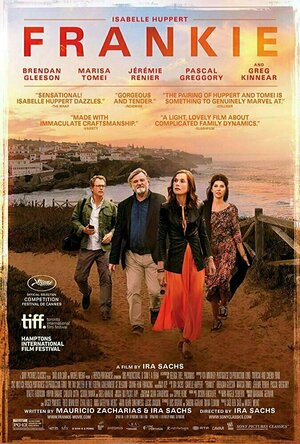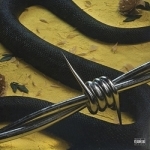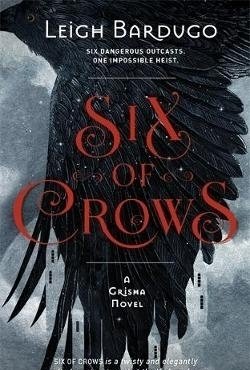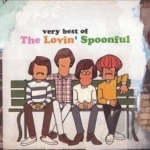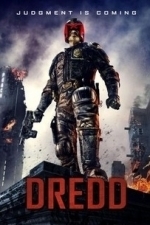Search
Search results
Bong Mines Entertainment (15 KP) rated Dawn by SG Lewis in Music
Jun 26, 2019
SG Lewis is a London-based songwriter, producer, and multi-instrumentalist. Not too long ago, he released his “Dawn” EP ahead of his two high profile festival appearances at North Coast Music Festival and Jay-Z’s Made In America, and a headlining tour in September.
His 6-track project, released via Casablanca and Republic Records, is the third and final chapter of his three-part concept album, entitled, Dusk, Dark, Dawn.
“I forgive, I forget all the words I’ve never spoken. I’ve been lost, I’ve been hurt, I’ve been blamed. Sitting here on the floor feels like I’ve been high forever. Coming down, falling hard, all in vain.” – lyrics
‘Easy Loving You’ tells a bittersweet tale of a heavy-hearted young man who struggles to cope with the pain after suffering an emotional breakup with his girlfriend.
Looking back in hindsight, he realizes that she wasn’t an easy person to love, and their problematic relation was doomed from the start because they were oceans apart.
Later, he admits that both of them are broken and in need of emotional repair. Also, it hurts every time he remembers that they are no longer together.
‘Easy Loving You’ contains a gloomy storyline, heartfelt vocals, and melodic instrumentation flavored with sentimental and electro-R&B elements.
“Blue, in your eyes as I fall for the night. But you’ll fade away when morning light is rising. Leave a taste lingering on my skin. Have I been here before? You touch me and I fall. I close my eyes on the horizon, me and you. I can see the lights inside my mind are glowing blue.” – lyrics
Not too long ago, SG Lewis released the psychedelic, Rainbow Road tinged music video for his EP opener, entitled, “Blue”.
The likable tune was inspired by the countless amount of hours that Lewis spent in airports while touring over the last year.
Get acquainted with his music by streaming his “Dawn” EP via Spotify.
“‘Dawn’ is the final phase of the 3-part album I have spent the last 18 months working on. ‘Dawn’ captures the energy of the end of the night, the intimacy of the quieter moments, and the emotions felt after the energetic highs of ‘Dark’. It is a more introspective phase, and is the most personal music I think I have ever released.” – SG Lewis
It’s been an impressive year for SG Lewis, with SOLD-OUT shows across North America, Asia, and Europe.
Not too long ago, Dark‘s lead single, “Hurting”, hit No.1 on the Billboard Dance/Mix Show Airplay Chart.
Also, Lewis played a prime slot at this year’s Coachella and continues to cement his status as not one of London’s hottest new talents, capable of making a splash on both sides of the Atlantic.
His 6-track project, released via Casablanca and Republic Records, is the third and final chapter of his three-part concept album, entitled, Dusk, Dark, Dawn.
“I forgive, I forget all the words I’ve never spoken. I’ve been lost, I’ve been hurt, I’ve been blamed. Sitting here on the floor feels like I’ve been high forever. Coming down, falling hard, all in vain.” – lyrics
‘Easy Loving You’ tells a bittersweet tale of a heavy-hearted young man who struggles to cope with the pain after suffering an emotional breakup with his girlfriend.
Looking back in hindsight, he realizes that she wasn’t an easy person to love, and their problematic relation was doomed from the start because they were oceans apart.
Later, he admits that both of them are broken and in need of emotional repair. Also, it hurts every time he remembers that they are no longer together.
‘Easy Loving You’ contains a gloomy storyline, heartfelt vocals, and melodic instrumentation flavored with sentimental and electro-R&B elements.
“Blue, in your eyes as I fall for the night. But you’ll fade away when morning light is rising. Leave a taste lingering on my skin. Have I been here before? You touch me and I fall. I close my eyes on the horizon, me and you. I can see the lights inside my mind are glowing blue.” – lyrics
Not too long ago, SG Lewis released the psychedelic, Rainbow Road tinged music video for his EP opener, entitled, “Blue”.
The likable tune was inspired by the countless amount of hours that Lewis spent in airports while touring over the last year.
Get acquainted with his music by streaming his “Dawn” EP via Spotify.
“‘Dawn’ is the final phase of the 3-part album I have spent the last 18 months working on. ‘Dawn’ captures the energy of the end of the night, the intimacy of the quieter moments, and the emotions felt after the energetic highs of ‘Dark’. It is a more introspective phase, and is the most personal music I think I have ever released.” – SG Lewis
It’s been an impressive year for SG Lewis, with SOLD-OUT shows across North America, Asia, and Europe.
Not too long ago, Dark‘s lead single, “Hurting”, hit No.1 on the Billboard Dance/Mix Show Airplay Chart.
Also, Lewis played a prime slot at this year’s Coachella and continues to cement his status as not one of London’s hottest new talents, capable of making a splash on both sides of the Atlantic.

TracePlay - Proudly afro-urban
Music and Entertainment
App
TracePlay is the First and Only Global Service that Provides 10 Live TVs, 30 Radios and more than...

Radios Costa Rica - Emisoras de Radio en Vivo FM
Music
App
*** LIVE RADIO BROADCAST *** Now is simple listen your stations of radio of Costa Rica in your...

FlyMaps | 3D Maps + Wikipedia
Navigation and Travel
App
FlyMaps uses 3D maps to visit cities around the world. Including more than 200 cities and places....
Bob Mann (459 KP) rated Frankie (2019) in Movies
May 24, 2021
A film about death that dies on its feet.
In "Frankie", the eponymous French movie star (played by Isabelle Huppert) is dying of cancer and gathers her complex family and friends around her for one last 'family holiday' in the picturesque Portuguese town of Sintra. We follow the events of a single day of the vacation as frictions and back-stories of the players become more evident.
Positives:
- Sintra looks gorgeous: as a regular visitor to Portugal's Silver Coast, it's a place I've not yet visited. The cinematography of the region makes me want to change that.
- There are a couple of decent scenes in the movie: both involving the trustworthy Greg Kinnear: one involving him trying to sell a film idea to Frankie (who knows, but won't tell him, that she won't be around for it); and another with Kinnear and Tomei at their hotel.
Negatives:
- Where do I start.... the film is as dull as dishwater!
-- A criticism I had of the otherwise impressive "Nomadland" was that the story arc of the leading character was shallow and not very compelling. The story arc here is a bloody straight line! Virtually nothing happens in the movie and it goes nowhere. Events occur as isolated snippets in the storyline. For example, the 'loss' of an expensive bracelet is randomly lobbed into the story, but then is never referenced back in any future narrative.
-- When the ending happened (which the illustrious Mrs Movie Man referred to as a "blessing") it was a non-event. The lady behind us in the cinema exclaimed "WHAT????". And I could understand her frustration.
- The direction is distinctly lacking. Aside from the couple of decent scenes (see above), most of the shots feel like first takes, with the actors doing read-throughs of the clunky script to try to work out how to best sell the lines. "OK, time to film it for real now". But director Sachs has already shouted "Cut and Print.... now who's for some more vinos and Pastel de Nata?"! Were they aiming for some sort of naturalistic fumbling of the character's conversations? For that's how it comes across, and it's just awful.
- The script feels like a wasted opportunity. The set-up should have been a good one for an intense drama. And there are flashes (merely flashes) of potential brilliance in there: a formative step-brother/step-sister incident is based around the film "Grease", which is mirrored (either cleverly or purely through coincidence!?) in the beach-side romance of Maya (Sennia Nanua) and Portuguese holiday-maker Pedro (Manuel Sá Nogueira). And does the homosexual Michel (Pascal Greggory) have his sights on Jimmy (Brendan Gleeson)? Or Tiago? Or both? None of these potentially interesting strands ever get tied down.
- Aside from the poor script and the poor direction, some of the acting performances are unconvincing. "The Girl with all the Gifts" was a fabulous film - it made my number 2 slot of 2016! And I called out young Sennia Nanua as "one to watch for the future" as the zombie girl at the heart of the film. Here she was 17 at the time of filming. But I'm afraid I just didn't find her convincing as the moody teen. (By the way, I only single her out, since I was so impressed with her previous performance: with the exception perhaps of Kinnear, Tomei and Carloto Cotta. none of the rest of the cast consistently shine either.)
Summary Thoughts: It's a real shame that my first visit back to the cinema was such a let-down. Ira Sachs is not a director I know, but he comes with a strong reputation (for 2016's "Little Men"). But here he delivers a plain stinker. I'm afraid this movie has a word associated with it, and the word is "Avoid".
(For the full graphical review, please check out "One Mann's Movies" here - https://bob-the-movie-man.com/2021/05/24/frankie-a-film-about-death-that-dies-on-its-feet/. Thanks.)
Positives:
- Sintra looks gorgeous: as a regular visitor to Portugal's Silver Coast, it's a place I've not yet visited. The cinematography of the region makes me want to change that.
- There are a couple of decent scenes in the movie: both involving the trustworthy Greg Kinnear: one involving him trying to sell a film idea to Frankie (who knows, but won't tell him, that she won't be around for it); and another with Kinnear and Tomei at their hotel.
Negatives:
- Where do I start.... the film is as dull as dishwater!
-- A criticism I had of the otherwise impressive "Nomadland" was that the story arc of the leading character was shallow and not very compelling. The story arc here is a bloody straight line! Virtually nothing happens in the movie and it goes nowhere. Events occur as isolated snippets in the storyline. For example, the 'loss' of an expensive bracelet is randomly lobbed into the story, but then is never referenced back in any future narrative.
-- When the ending happened (which the illustrious Mrs Movie Man referred to as a "blessing") it was a non-event. The lady behind us in the cinema exclaimed "WHAT????". And I could understand her frustration.
- The direction is distinctly lacking. Aside from the couple of decent scenes (see above), most of the shots feel like first takes, with the actors doing read-throughs of the clunky script to try to work out how to best sell the lines. "OK, time to film it for real now". But director Sachs has already shouted "Cut and Print.... now who's for some more vinos and Pastel de Nata?"! Were they aiming for some sort of naturalistic fumbling of the character's conversations? For that's how it comes across, and it's just awful.
- The script feels like a wasted opportunity. The set-up should have been a good one for an intense drama. And there are flashes (merely flashes) of potential brilliance in there: a formative step-brother/step-sister incident is based around the film "Grease", which is mirrored (either cleverly or purely through coincidence!?) in the beach-side romance of Maya (Sennia Nanua) and Portuguese holiday-maker Pedro (Manuel Sá Nogueira). And does the homosexual Michel (Pascal Greggory) have his sights on Jimmy (Brendan Gleeson)? Or Tiago? Or both? None of these potentially interesting strands ever get tied down.
- Aside from the poor script and the poor direction, some of the acting performances are unconvincing. "The Girl with all the Gifts" was a fabulous film - it made my number 2 slot of 2016! And I called out young Sennia Nanua as "one to watch for the future" as the zombie girl at the heart of the film. Here she was 17 at the time of filming. But I'm afraid I just didn't find her convincing as the moody teen. (By the way, I only single her out, since I was so impressed with her previous performance: with the exception perhaps of Kinnear, Tomei and Carloto Cotta. none of the rest of the cast consistently shine either.)
Summary Thoughts: It's a real shame that my first visit back to the cinema was such a let-down. Ira Sachs is not a director I know, but he comes with a strong reputation (for 2016's "Little Men"). But here he delivers a plain stinker. I'm afraid this movie has a word associated with it, and the word is "Avoid".
(For the full graphical review, please check out "One Mann's Movies" here - https://bob-the-movie-man.com/2021/05/24/frankie-a-film-about-death-that-dies-on-its-feet/. Thanks.)
Bong Mines Entertainment (15 KP) rated Beerbongs & Bentleys by Post Malone in Music
Jun 7, 2019
Post Malone is a rapper from Syracuse, New York. Not too long ago, he released his sophomore album, entitled, “beerbongs & bentleys”, featuring Swae Lee, 21 Savage, Ty Dolla Sign, Nicki Minaj, G-Eazy, and YG.
Malone wears his heart on his sleeve and speaks from the heart. His world is good and bad, and he blames himself for his dual reality because life is what you make it.
PARANOID
Malone opens the album speaking about his paranoia. He’s worked so hard to become rich and successful. Now, he can’t trust anyone around him. He fears that people are out to get him for his riches, which he has stashed in different areas of his home.
To protect himself, Malone sleeps with a gun by his bed. Also, he’s willing to shoot anyone trying to break in or enter his home unannounced.
SPOIL MY NIGHT (FT. SWAE LEE)
Malone addresses limelight-lustful females he encounters in nightclubs. The women know Malone is a celebrity, so they want their social-media world to know that they are hanging out with him.
Malone admits that what he’s doing is wrong. But there’s no need for these women to get star-struck. In a way, he’s suspicious about their move to go live on Instagram. He would rather them chill and keep things on the low.
RICH & SAD
Malone addresses his girlfriend. She’s the reason why he doesn’t want his female fans recording him in the clubs.
Apparently, Malone’s girl leaves him for unknown reasons. Malone claims it’s because his career is skyrocketing. So, that might’ve complicated their relationship. But the real reason is anyone’s guess.
After her departure, Malone feels lonely and depressed, even though he’s surrounded by fame and fortune.
Malone realizes that money can’t buy happiness. All he wants is his girlfriend back.
ZACK AND CODEINE
Malone solves his loneliness by indulging in his guilty pleasures. So, he parties in a hotel lobby, filled with women, drugs, and alcohol.
Malone celebrates his success and doesn’t plan on sleeping anytime soon. As long as he’s partying, he doesn’t feel alone. He even addresses the current state of urban music.
TAKIN’ SHOTS
Malone continues his pleasure-seeking. This time, he’s at another party, mixing unprotected threesome sex, drugs, and alcohol.
Malone is drunk before he gets to the party. Still, that doesn’t stop him from taking more shots. Also, he’s waiting for more drugs to come.
ROCKSTAR FEAT. 21 SAVAGE
Malone identifies what he is—a Rockstar, smoking weed like a Rasta, f*cking hoes, and popping pills.
The Emil Nava-directed video shows Malone as a deranged swordsman. Also, he is warring against the ops, and they are clothed in business attire.
OVER NOW
Malone stops partying and addresses his off-and-on relationship with his girlfriend. This time, he lets her know that he’s been a begging idiot. Now, he doesn’t want her anymore. It’s over!
PSYCHO FEAT. TY DOLLA $IGN
Malone raps about making his first million, how much he charges for a walkthrough, and how the jewelry on his neck is making his neck cold. Also, all these things he has accumulated, have women asking, “Can I have some to hold?”
The James DeFina-directed video begins with Malone riding a tank in a deserted area. Also, later scenes show Ty Dolla riding inside the tank.
BETTER NOW
Malone reverts back to talking about his ex-girlfriend. He questions her saying that she is better now. But he doesn’t believe that, even though he sees her with a new guy.
Malone is trying to win back her love and faults himself as the problem of their separation. He puts his heart on his sleeve and lets it be known that he’s still in love with her.
BALL FOR ME FEAT. NICKI MINAJ
Malone ditches his relationship drama and puts on his ballin’ jersey. He’s busy on the road getting paid. So, he doesn’t have time to personally take her shopping on Rodeo Drive.
The girl wants to be styled in Saint Laurent fashion. So, Malone offers to pay $30,000 for the shopping spree and nothing more.
OTHERSIDE
Malone reverts back to talking about his ex-girlfriend. He’s been drinking and reminiscing about their rocky relationship. Also, he wants to know why she doesn’t answer when he calls her name.
It seems Malone’s girl did him dirty. She left him in the cold and now he’s burning inside trying to drink away the pain. But somehow, he still loves her and wants the waves to come and take him back to her.
STAY
Malone is stuck in a sunken place. The rocky relationship between him and his ex is starting to get to him and he’s starting to drink more and more.
BLAME IT ON ME
Malone reflects on a time when he didn’t have money and fame. Life was so simple back then.
Now, people around him are trying to take pieces of him, and everything he has worked hard for. He blames himself for them taking advantage of him, even though he knows they love when he’s in agony.
SAME BITCHES FEAT. YG & G-EAZY
Malone raps about being in Los Angeles. He questions, if the population is 4-million, how come he sees the same b*tches? Also, he questions their intention.
JONESTOWN (INTERLUDE)
Malone is depressed again. He mentions the Jonestown cult massacre when Jim Jones poisoned his followers with a poisonous Kool-Aid drink.
Malone raps about his 1992 Ford Explorer. Apparently, he purchased another one for $1,700 and got it customized by West Coast Customs.
CANDY PAINT
Malone continues his lavish talks about his lavish lifestyle, expensive vehicles, and his boss status. Also, he warns people not to plot on what he has because it can get ugly.
‘Candy Paint’ was originally recorded for “The Fate of the Furious: The Album” soundtrack.
SUGAR WRAITH
Malone continues with the car theme. He raps about his Rolls Royce Wraith and taking it out for a drive. Also, he covers other topics.
CONCLUSION
‘beerbongs & bentleys’ is a rhythmic/harmonious album with solid production and detailed songwriting.
Also, it highlights Malone’s struggles, pinpoints his weaknesses and addictions, which are lotion with tears of depression and materialistic happiness.
https://www.bongminesentertainment.com/post-malone-beerbongs-bentleys/
Malone wears his heart on his sleeve and speaks from the heart. His world is good and bad, and he blames himself for his dual reality because life is what you make it.
PARANOID
Malone opens the album speaking about his paranoia. He’s worked so hard to become rich and successful. Now, he can’t trust anyone around him. He fears that people are out to get him for his riches, which he has stashed in different areas of his home.
To protect himself, Malone sleeps with a gun by his bed. Also, he’s willing to shoot anyone trying to break in or enter his home unannounced.
SPOIL MY NIGHT (FT. SWAE LEE)
Malone addresses limelight-lustful females he encounters in nightclubs. The women know Malone is a celebrity, so they want their social-media world to know that they are hanging out with him.
Malone admits that what he’s doing is wrong. But there’s no need for these women to get star-struck. In a way, he’s suspicious about their move to go live on Instagram. He would rather them chill and keep things on the low.
RICH & SAD
Malone addresses his girlfriend. She’s the reason why he doesn’t want his female fans recording him in the clubs.
Apparently, Malone’s girl leaves him for unknown reasons. Malone claims it’s because his career is skyrocketing. So, that might’ve complicated their relationship. But the real reason is anyone’s guess.
After her departure, Malone feels lonely and depressed, even though he’s surrounded by fame and fortune.
Malone realizes that money can’t buy happiness. All he wants is his girlfriend back.
ZACK AND CODEINE
Malone solves his loneliness by indulging in his guilty pleasures. So, he parties in a hotel lobby, filled with women, drugs, and alcohol.
Malone celebrates his success and doesn’t plan on sleeping anytime soon. As long as he’s partying, he doesn’t feel alone. He even addresses the current state of urban music.
TAKIN’ SHOTS
Malone continues his pleasure-seeking. This time, he’s at another party, mixing unprotected threesome sex, drugs, and alcohol.
Malone is drunk before he gets to the party. Still, that doesn’t stop him from taking more shots. Also, he’s waiting for more drugs to come.
ROCKSTAR FEAT. 21 SAVAGE
Malone identifies what he is—a Rockstar, smoking weed like a Rasta, f*cking hoes, and popping pills.
The Emil Nava-directed video shows Malone as a deranged swordsman. Also, he is warring against the ops, and they are clothed in business attire.
OVER NOW
Malone stops partying and addresses his off-and-on relationship with his girlfriend. This time, he lets her know that he’s been a begging idiot. Now, he doesn’t want her anymore. It’s over!
PSYCHO FEAT. TY DOLLA $IGN
Malone raps about making his first million, how much he charges for a walkthrough, and how the jewelry on his neck is making his neck cold. Also, all these things he has accumulated, have women asking, “Can I have some to hold?”
The James DeFina-directed video begins with Malone riding a tank in a deserted area. Also, later scenes show Ty Dolla riding inside the tank.
BETTER NOW
Malone reverts back to talking about his ex-girlfriend. He questions her saying that she is better now. But he doesn’t believe that, even though he sees her with a new guy.
Malone is trying to win back her love and faults himself as the problem of their separation. He puts his heart on his sleeve and lets it be known that he’s still in love with her.
BALL FOR ME FEAT. NICKI MINAJ
Malone ditches his relationship drama and puts on his ballin’ jersey. He’s busy on the road getting paid. So, he doesn’t have time to personally take her shopping on Rodeo Drive.
The girl wants to be styled in Saint Laurent fashion. So, Malone offers to pay $30,000 for the shopping spree and nothing more.
OTHERSIDE
Malone reverts back to talking about his ex-girlfriend. He’s been drinking and reminiscing about their rocky relationship. Also, he wants to know why she doesn’t answer when he calls her name.
It seems Malone’s girl did him dirty. She left him in the cold and now he’s burning inside trying to drink away the pain. But somehow, he still loves her and wants the waves to come and take him back to her.
STAY
Malone is stuck in a sunken place. The rocky relationship between him and his ex is starting to get to him and he’s starting to drink more and more.
BLAME IT ON ME
Malone reflects on a time when he didn’t have money and fame. Life was so simple back then.
Now, people around him are trying to take pieces of him, and everything he has worked hard for. He blames himself for them taking advantage of him, even though he knows they love when he’s in agony.
SAME BITCHES FEAT. YG & G-EAZY
Malone raps about being in Los Angeles. He questions, if the population is 4-million, how come he sees the same b*tches? Also, he questions their intention.
JONESTOWN (INTERLUDE)
Malone is depressed again. He mentions the Jonestown cult massacre when Jim Jones poisoned his followers with a poisonous Kool-Aid drink.
Malone raps about his 1992 Ford Explorer. Apparently, he purchased another one for $1,700 and got it customized by West Coast Customs.
CANDY PAINT
Malone continues his lavish talks about his lavish lifestyle, expensive vehicles, and his boss status. Also, he warns people not to plot on what he has because it can get ugly.
‘Candy Paint’ was originally recorded for “The Fate of the Furious: The Album” soundtrack.
SUGAR WRAITH
Malone continues with the car theme. He raps about his Rolls Royce Wraith and taking it out for a drive. Also, he covers other topics.
CONCLUSION
‘beerbongs & bentleys’ is a rhythmic/harmonious album with solid production and detailed songwriting.
Also, it highlights Malone’s struggles, pinpoints his weaknesses and addictions, which are lotion with tears of depression and materialistic happiness.
https://www.bongminesentertainment.com/post-malone-beerbongs-bentleys/
Sophia (Bookwyrming Thoughts) (530 KP) rated Six of Crows in Books
Jan 23, 2020
I know. I KNOW. I SLACK A LOT LATELY. 😳
<div class="separator" style="clear: both; text-align: center;"><a style="margin-left: 1em; margin-right: 1em;" href="https://1.bp.blogspot.com/-hcqoJiAtqoU/WP49XaJ2bwI/AAAAAAAAHOA/OnF5g0zvczILdnf3D8tiOTTTG2Uhr1_7gCLcB/s1600/hiding-gif.gif"><img src="http://bookwyrmingthoughts.bookblog.io/wp-content/uploads/sites/317/2017/05/hiding-gif.gif"; width="320" height="168" border="0" /></a></div>
I’ve finally read <em>Six of Crows,</em> the book that everyone keeps talking about and won’t stop talking about (now everyone keeps talking about <i>Crooked Kingdom</i>, among other books), and <i>hellooo </i>this is better than the <i>Grisha </i>trilogy. I didn’t even like Alina or Mal from the first series - if anything, I liked the Darkling (bless his dark heart) and Stormhound (I keep wondering if he’ll appear and he doesn’t seem to have despite the fact there might be mentions of him 🤔).
Yet with <i>Six of Crows</i>… I like maybe 85% of the main characters. I say maybe because my math might actually be off and I’m too lazy to actually pull out a calculator and punch in some numbers to get what might be 0.84999. And it’s 85% because I might hate them later. That’s more than who I liked from the <i>Grisha </i>trilogy. 😱
<i>Six of Crows</i> technically has six main characters: Kaz, Inej, Nina, Matthias, Jesper, and Wylan (the odd little bean with no spotlight and therefore no prowling in his mind). All of whom are outcasts sent on a suicidal mission to rescue the creator of a drug that increases a Grisha’s power exponentially yet kills them in the end.
Five of which all have POVs switching around every chapter. I’m not a <i>huge </i>fan of multiple POVs because it can easily get confusing, but Bardugo wrote all five in a way that I’m not confused and running around like a little hamster who lost hold of how to stop its wheel.
The group of six are <i>fantastic </i>as a group - despite their differences, they get along pretty well and have a great dynamic together. They’re even better as pairs: Kaz and Inej, Nina and Matthias, Jesper and Wylan. I am all for witty and snark and just great dialogue. 😍
<blockquote class="tr_bq">Jesper knocked his head against the hull and cast his eyes heavenward. “Fine. But if Pekka Rollins kills us all, I’m going to get Wylan’s ghost to teach my ghost how to play the flute just so that I can annoy the hell out of your ghost.”
Brekker’s lips quirked. “I’ll just hire Matthias’ ghost to kick your ghost’s ass.”
“My ghost won’t associate with your ghost,” Matthias said primly.</blockquote>
In case anyone wonders…. I ship Kaz and Inej. They are, simply out, badass and go well together perfectly (apparently my ship doesn’t sail in the sequel, which I’m extremely disappointed about). Kaz is a brilliant leader leading the Dregs with all kinds of tricks and plans up his cane and never backs down from a mission no matter how impossible it may be. Inej is a highly skilled assassin who has a knack for sneaking up on people without them ever knowing. Have I mentioned under their tough exteriors, they’re occasionally softies and it’s cute?
Onto ze world… <i>Six of Crows</i> brings us back to the world of Grisha, onto a small little island off the coast of Ravka and Shu Han, and into a little area called Ketterdam where criminals and misfits of society lurk together. I really loved the drastic change from palaces to a complete polar opposite where one has to constantly watch their back. Throughout the duration of the book, I really liked Bardugo’s descriptions of each place the six travel on their way, especially with how Fjerda has this ice court with a palace virtually impossible to break into with all the top notch security that they have.
<i>Six of Crows</i> can be read regardless of whether or not the <i>Grisha </i>trilogy has been read - there’s excellent character dynamics, great dialogue that might cause a laugh or two, and a cast that come from all kinds of backgrounds.
<a href="https://bookwyrmingthoughts.com/six-of-crows-by-leigh-bardugo-review/"; target="_blank">This review was originally posted on Bookwyrming Thoughts</a>
<div class="separator" style="clear: both; text-align: center;"><a style="margin-left: 1em; margin-right: 1em;" href="https://1.bp.blogspot.com/-hcqoJiAtqoU/WP49XaJ2bwI/AAAAAAAAHOA/OnF5g0zvczILdnf3D8tiOTTTG2Uhr1_7gCLcB/s1600/hiding-gif.gif"><img src="http://bookwyrmingthoughts.bookblog.io/wp-content/uploads/sites/317/2017/05/hiding-gif.gif"; width="320" height="168" border="0" /></a></div>
I’ve finally read <em>Six of Crows,</em> the book that everyone keeps talking about and won’t stop talking about (now everyone keeps talking about <i>Crooked Kingdom</i>, among other books), and <i>hellooo </i>this is better than the <i>Grisha </i>trilogy. I didn’t even like Alina or Mal from the first series - if anything, I liked the Darkling (bless his dark heart) and Stormhound (I keep wondering if he’ll appear and he doesn’t seem to have despite the fact there might be mentions of him 🤔).
Yet with <i>Six of Crows</i>… I like maybe 85% of the main characters. I say maybe because my math might actually be off and I’m too lazy to actually pull out a calculator and punch in some numbers to get what might be 0.84999. And it’s 85% because I might hate them later. That’s more than who I liked from the <i>Grisha </i>trilogy. 😱
<i>Six of Crows</i> technically has six main characters: Kaz, Inej, Nina, Matthias, Jesper, and Wylan (the odd little bean with no spotlight and therefore no prowling in his mind). All of whom are outcasts sent on a suicidal mission to rescue the creator of a drug that increases a Grisha’s power exponentially yet kills them in the end.
Five of which all have POVs switching around every chapter. I’m not a <i>huge </i>fan of multiple POVs because it can easily get confusing, but Bardugo wrote all five in a way that I’m not confused and running around like a little hamster who lost hold of how to stop its wheel.
The group of six are <i>fantastic </i>as a group - despite their differences, they get along pretty well and have a great dynamic together. They’re even better as pairs: Kaz and Inej, Nina and Matthias, Jesper and Wylan. I am all for witty and snark and just great dialogue. 😍
<blockquote class="tr_bq">Jesper knocked his head against the hull and cast his eyes heavenward. “Fine. But if Pekka Rollins kills us all, I’m going to get Wylan’s ghost to teach my ghost how to play the flute just so that I can annoy the hell out of your ghost.”
Brekker’s lips quirked. “I’ll just hire Matthias’ ghost to kick your ghost’s ass.”
“My ghost won’t associate with your ghost,” Matthias said primly.</blockquote>
In case anyone wonders…. I ship Kaz and Inej. They are, simply out, badass and go well together perfectly (apparently my ship doesn’t sail in the sequel, which I’m extremely disappointed about). Kaz is a brilliant leader leading the Dregs with all kinds of tricks and plans up his cane and never backs down from a mission no matter how impossible it may be. Inej is a highly skilled assassin who has a knack for sneaking up on people without them ever knowing. Have I mentioned under their tough exteriors, they’re occasionally softies and it’s cute?
Onto ze world… <i>Six of Crows</i> brings us back to the world of Grisha, onto a small little island off the coast of Ravka and Shu Han, and into a little area called Ketterdam where criminals and misfits of society lurk together. I really loved the drastic change from palaces to a complete polar opposite where one has to constantly watch their back. Throughout the duration of the book, I really liked Bardugo’s descriptions of each place the six travel on their way, especially with how Fjerda has this ice court with a palace virtually impossible to break into with all the top notch security that they have.
<i>Six of Crows</i> can be read regardless of whether or not the <i>Grisha </i>trilogy has been read - there’s excellent character dynamics, great dialogue that might cause a laugh or two, and a cast that come from all kinds of backgrounds.
<a href="https://bookwyrmingthoughts.com/six-of-crows-by-leigh-bardugo-review/"; target="_blank">This review was originally posted on Bookwyrming Thoughts</a>
The Bandersnatch (199 KP) rated Memoirs of a Geisha in Books
Nov 7, 2019
Memoirs of a Geisha is a historical fiction book published on September 27th 1997. Told in the first person Viewpoint of Geisha Sayuri (Original name Chiyo), It follows her journey from her childhood in a fishing village on the coast of Japan, forcibly taken to a Hanamachi in Gion Kyoto and raised to become a Geisha before experiencing the horrors of WW2 and being a Geisha during the hard work of rebuilding after a harrowing defeat.
My opinion of the book is one of both curiosity and interest. Japan is one of those countries where its history and culture is both unusual and mysterious. The book gives a brief glimpse into the hidden world of the Geisha which are a prominent spot in Japanese culture but are relatively unknown world wide. I believe that the story of Sayuri is one of personal travel and evolution. Since we see Sayuri';s experience as a child before becoming a Geisha, experiencing the horror of war and eventually finding love with the Chairman.
Arthur Golden was born on December 6th 1956 in Chattanooga, Tennessee. When he was eight years old his parents divorced with his father dying five years later. He spent most of his childhood living in lookout mountain, Georgia before graduating from the Baylor school in Chattanooga in 1974. After earning a degree in Fine art (Specifically Japanese art), an M. A. in Japanese history, Golden spent a summer at the Peking University in Beijing and spent some time working in Tokyo. When he returned to the states he earned an M. A. in English at Boston University. Golden married Trudi Legge and they went on to have two children Hays and Tess.
After getting the initial idea for Memoirs of a Geisha Golden spent six years over the story rewriting it at least three times, changing the view point until settling on the viewpoint of Sayuri. Golden had spent time interviewing several Geisha including Mineko Iwasaki (who ended up suing Golden when the Japanese version of the book came out for breach of contract.....the case was settled out of court in 2003) all of whom provided information about the world of the Geisha. After its release Memoirs of a Geisha spent two years on the New York Times bestseller list, its sold more than four million copies in English alone and has been translated into thirty-two languages around the world. In 2005 the book was made into a movie garnering three academy awards.
My opinion of Arthur Golden is very small and somewhat limited.......I believe he is a fantastic writer and very knowledgeable about Japanese history and art....Much more so than I am but hearing he faced being sued because of citing who his sources were when he was contracted not to has put something of a dampener on his character in my eyes.
Memoirs of a Geisha was released as a Movie on December 9th 2005 under director Rob Marshall and Produced by Steven Spielberg's production Company Amblin Entertainment and Spyglass Entertainment. With its production from pre- to post-production taking place mainly in California US, with a few spots filmed in Kyoto Japan. The movie received mixed reviews in the western world and received somewhat negative reviews in Japan due to its mixed casting of Chinese and Japanese actors and actresses and its relationship to history. Despite the chaos they won three Academy Awards (Best Art Direction, Best Cinematography and Best Costume Design), a Golden Globe (Best Original Score), A national Board of review (Best Supporting Actress), a satellite award (Outstanding screenplay) and three BAFTA's (Cinematography, Costume design and the Anthony Asquith award for Achievement in film music).
Whilst I quite like the movie I definitely feel that if more effort was put into tying more of both Japanese and Geisha history was some how tied into the movie. As well as using more Japanese Actors and actresses in the roles......despite that I believe the actors and actresses did a very good job in brining the script to life and keep a layer of mystery and fluidity to their roles.
And there you have it a book for all the ages, its definitely under the banner of AWESOME!!!.
My opinion of the book is one of both curiosity and interest. Japan is one of those countries where its history and culture is both unusual and mysterious. The book gives a brief glimpse into the hidden world of the Geisha which are a prominent spot in Japanese culture but are relatively unknown world wide. I believe that the story of Sayuri is one of personal travel and evolution. Since we see Sayuri';s experience as a child before becoming a Geisha, experiencing the horror of war and eventually finding love with the Chairman.
Arthur Golden was born on December 6th 1956 in Chattanooga, Tennessee. When he was eight years old his parents divorced with his father dying five years later. He spent most of his childhood living in lookout mountain, Georgia before graduating from the Baylor school in Chattanooga in 1974. After earning a degree in Fine art (Specifically Japanese art), an M. A. in Japanese history, Golden spent a summer at the Peking University in Beijing and spent some time working in Tokyo. When he returned to the states he earned an M. A. in English at Boston University. Golden married Trudi Legge and they went on to have two children Hays and Tess.
After getting the initial idea for Memoirs of a Geisha Golden spent six years over the story rewriting it at least three times, changing the view point until settling on the viewpoint of Sayuri. Golden had spent time interviewing several Geisha including Mineko Iwasaki (who ended up suing Golden when the Japanese version of the book came out for breach of contract.....the case was settled out of court in 2003) all of whom provided information about the world of the Geisha. After its release Memoirs of a Geisha spent two years on the New York Times bestseller list, its sold more than four million copies in English alone and has been translated into thirty-two languages around the world. In 2005 the book was made into a movie garnering three academy awards.
My opinion of Arthur Golden is very small and somewhat limited.......I believe he is a fantastic writer and very knowledgeable about Japanese history and art....Much more so than I am but hearing he faced being sued because of citing who his sources were when he was contracted not to has put something of a dampener on his character in my eyes.
Memoirs of a Geisha was released as a Movie on December 9th 2005 under director Rob Marshall and Produced by Steven Spielberg's production Company Amblin Entertainment and Spyglass Entertainment. With its production from pre- to post-production taking place mainly in California US, with a few spots filmed in Kyoto Japan. The movie received mixed reviews in the western world and received somewhat negative reviews in Japan due to its mixed casting of Chinese and Japanese actors and actresses and its relationship to history. Despite the chaos they won three Academy Awards (Best Art Direction, Best Cinematography and Best Costume Design), a Golden Globe (Best Original Score), A national Board of review (Best Supporting Actress), a satellite award (Outstanding screenplay) and three BAFTA's (Cinematography, Costume design and the Anthony Asquith award for Achievement in film music).
Whilst I quite like the movie I definitely feel that if more effort was put into tying more of both Japanese and Geisha history was some how tied into the movie. As well as using more Japanese Actors and actresses in the roles......despite that I believe the actors and actresses did a very good job in brining the script to life and keep a layer of mystery and fluidity to their roles.
And there you have it a book for all the ages, its definitely under the banner of AWESOME!!!.
Johnny Marr recommended track Coconut Grove by The Lovin Spoonful in Very Best of the Lovin' Spoonful by The Lovin Spoonful in Music (curated)
Gareth von Kallenbach (980 KP) rated Dredd (2012) in Movies
Aug 7, 2019
The mid 90’s was a strange time for movies. Sure, there were quite a few remembered fondly (just like with any era) but there were also many movies that are forgotten due to their ridiculousness. It was a time that gave us the style of adaptions on par with Alien 3 and Alien Resurrection, or the two Joel Schumacher Batman films. Likewise, there was a Judge Dredd film right in the middle of that time period.
It was a mess. It exemplified everything wrong with many adaptions in the 90’s. Big name actors, over-the-top designs, cheesy dialogue. It tried very hard to be akin to the original Total Recall but instead succeeded at only being a movie fun to laugh at. It featured Sylvester Stallone and Rob Schneider. That is all that needs to be said about that film. So, when Hollywood comes along and decides to make a new adaption, of course the original’s ridiculousness looms over the whole affair. Not helping is the fact that most of the cast and crew are relatively obscure, and its source material (the Judge Dredd comics) is not as well-known as most of Marvel’s or DC’s pantheon. Yet, this brand new adaption, Dredd 3D, soars much higher than the original and manages to be one of those well-hidden gems of Fall 2012. I don’t imagine this film breaking box office records, but it is a wholly worthwhile piece of screen entertainment, even if it has some notable flaws and is overshadowed by past outings in the franchise.
The future America is an irradiated waste land known as the Cursed Earth. On the east coast of North America lies Mega-City One, a vast, violent metropolis containing 800 million residents, where 17,000 crimes are reported daily and “Slo-Mo”, an addictive new drug that slows the user’s perception of time, has been introduced. The only force of order is the Judges, who act as police, judge, jury and executioner. Judge Dredd (Karl Urban) is tasked by the Chief Judge (Rakie Ayola) with evaluating rookie Judge Cassandra Anderson (Olivia Thirlby), a psychic who has failed the tests to become a full Judge. They become involved in a raid upon a crime and Slo-Mo ridden apartment complex known as Peach-Trees, which is ruled by a vicious crime boss Ma-Ma (Lena Heady).
You can guess from the title that the movie is meant to be watched in 3D. But that is where personal opinions of 3D come into play. For me personally, I cannot ding the film’s use of 3D because it uses it well enough that it becomes unnoticeable, which is to say it does not obnoxiously remind you at all times it is meant to be watched in 3D by throwing random things at the camera. But I will say that, although somewhat gimmicky, the “Slo-Mo” segments (which are shot from the perspective of those on the mind-altering drug ‘Slo-Mo’) do use 3D very well and manage to be some of the most visually striking and beautiful shots in the entire film.
The plot is simple to understand and straight forward. There are not huge twists and turns, and manages to be tightly written. It is not extremely memorable for plot standards, but it does not need to be. The story is held up by focusing on three major characters, which some good additional characterization of two more side characters. In that sense, the plot and characters do not pop off the screen into greatness, yet they are still tightly written enough that both elements (plot and characters) are not muddled or confusing. The simple plot, and the fact it all takes place in one apartment complex, makes it easier to focus on action and visuals.
While the visuals are all extremely well-done, the action could use some work. The setting of Mega-City One is extremely well established, as opposed to the original Judge Dredd adaption. It seems like it could be a real place not far off in the future, as it is set up with a realistic visual design – just with added grittiness and subtle science fictional elements. Also, there is not a huge amount of CG and the Judge uniforms especially look like iconic yet possibly realistic futuristic police suits. But the action could use some work, as stated. I could not help but constantly compare it to the recently released film, “The Raid: Redeption”, the Indonesian martial arts police film centering on a single police raid on an apartment complex. The similarities are there.
Both movies have very similar locations and plots, but the difference is that while Dredd has more interesting setting and science fiction elements (and arguably more interesting characters), The Raid: Redemption’s action is far more entertaining and engrossing. The real problem with Dredd is that there are never any real amazing feats of heroics on part of Judge Dredd. They set up the film in a sort of “’Die Hard’ in the future vibe” but that requires the hero to barely overcome overwhelming odds. As it stands, it never really feels like Judge Dredd is in a ton of danger. There are some cool shooting moments, and some even more interesting usage of Judge Anderson’s psychic powers. But at the end of the day, there simply are not many memorable action moments.
Overall, it does not ruin the film at all. It still manages to be an entertaining and interesting movie regardless of memorable action sequences. It has a tightly plotted narrative with fairly well done characters, not muddled by overuse of complexity or plot twists. It manages to be visually excellent with interesting science fictional elements, but never does it soar with its action set-pieces. It would have benefitted with some better use of gunplay or more clever feats of heroics on Judge Dredd’s part. But at least it takes itself seriously enough to not have anything akin to Rob Schneider following Sylvester Stallone around in a cheesy script.
It was a mess. It exemplified everything wrong with many adaptions in the 90’s. Big name actors, over-the-top designs, cheesy dialogue. It tried very hard to be akin to the original Total Recall but instead succeeded at only being a movie fun to laugh at. It featured Sylvester Stallone and Rob Schneider. That is all that needs to be said about that film. So, when Hollywood comes along and decides to make a new adaption, of course the original’s ridiculousness looms over the whole affair. Not helping is the fact that most of the cast and crew are relatively obscure, and its source material (the Judge Dredd comics) is not as well-known as most of Marvel’s or DC’s pantheon. Yet, this brand new adaption, Dredd 3D, soars much higher than the original and manages to be one of those well-hidden gems of Fall 2012. I don’t imagine this film breaking box office records, but it is a wholly worthwhile piece of screen entertainment, even if it has some notable flaws and is overshadowed by past outings in the franchise.
The future America is an irradiated waste land known as the Cursed Earth. On the east coast of North America lies Mega-City One, a vast, violent metropolis containing 800 million residents, where 17,000 crimes are reported daily and “Slo-Mo”, an addictive new drug that slows the user’s perception of time, has been introduced. The only force of order is the Judges, who act as police, judge, jury and executioner. Judge Dredd (Karl Urban) is tasked by the Chief Judge (Rakie Ayola) with evaluating rookie Judge Cassandra Anderson (Olivia Thirlby), a psychic who has failed the tests to become a full Judge. They become involved in a raid upon a crime and Slo-Mo ridden apartment complex known as Peach-Trees, which is ruled by a vicious crime boss Ma-Ma (Lena Heady).
You can guess from the title that the movie is meant to be watched in 3D. But that is where personal opinions of 3D come into play. For me personally, I cannot ding the film’s use of 3D because it uses it well enough that it becomes unnoticeable, which is to say it does not obnoxiously remind you at all times it is meant to be watched in 3D by throwing random things at the camera. But I will say that, although somewhat gimmicky, the “Slo-Mo” segments (which are shot from the perspective of those on the mind-altering drug ‘Slo-Mo’) do use 3D very well and manage to be some of the most visually striking and beautiful shots in the entire film.
The plot is simple to understand and straight forward. There are not huge twists and turns, and manages to be tightly written. It is not extremely memorable for plot standards, but it does not need to be. The story is held up by focusing on three major characters, which some good additional characterization of two more side characters. In that sense, the plot and characters do not pop off the screen into greatness, yet they are still tightly written enough that both elements (plot and characters) are not muddled or confusing. The simple plot, and the fact it all takes place in one apartment complex, makes it easier to focus on action and visuals.
While the visuals are all extremely well-done, the action could use some work. The setting of Mega-City One is extremely well established, as opposed to the original Judge Dredd adaption. It seems like it could be a real place not far off in the future, as it is set up with a realistic visual design – just with added grittiness and subtle science fictional elements. Also, there is not a huge amount of CG and the Judge uniforms especially look like iconic yet possibly realistic futuristic police suits. But the action could use some work, as stated. I could not help but constantly compare it to the recently released film, “The Raid: Redeption”, the Indonesian martial arts police film centering on a single police raid on an apartment complex. The similarities are there.
Both movies have very similar locations and plots, but the difference is that while Dredd has more interesting setting and science fiction elements (and arguably more interesting characters), The Raid: Redemption’s action is far more entertaining and engrossing. The real problem with Dredd is that there are never any real amazing feats of heroics on part of Judge Dredd. They set up the film in a sort of “’Die Hard’ in the future vibe” but that requires the hero to barely overcome overwhelming odds. As it stands, it never really feels like Judge Dredd is in a ton of danger. There are some cool shooting moments, and some even more interesting usage of Judge Anderson’s psychic powers. But at the end of the day, there simply are not many memorable action moments.
Overall, it does not ruin the film at all. It still manages to be an entertaining and interesting movie regardless of memorable action sequences. It has a tightly plotted narrative with fairly well done characters, not muddled by overuse of complexity or plot twists. It manages to be visually excellent with interesting science fictional elements, but never does it soar with its action set-pieces. It would have benefitted with some better use of gunplay or more clever feats of heroics on Judge Dredd’s part. But at least it takes itself seriously enough to not have anything akin to Rob Schneider following Sylvester Stallone around in a cheesy script.
